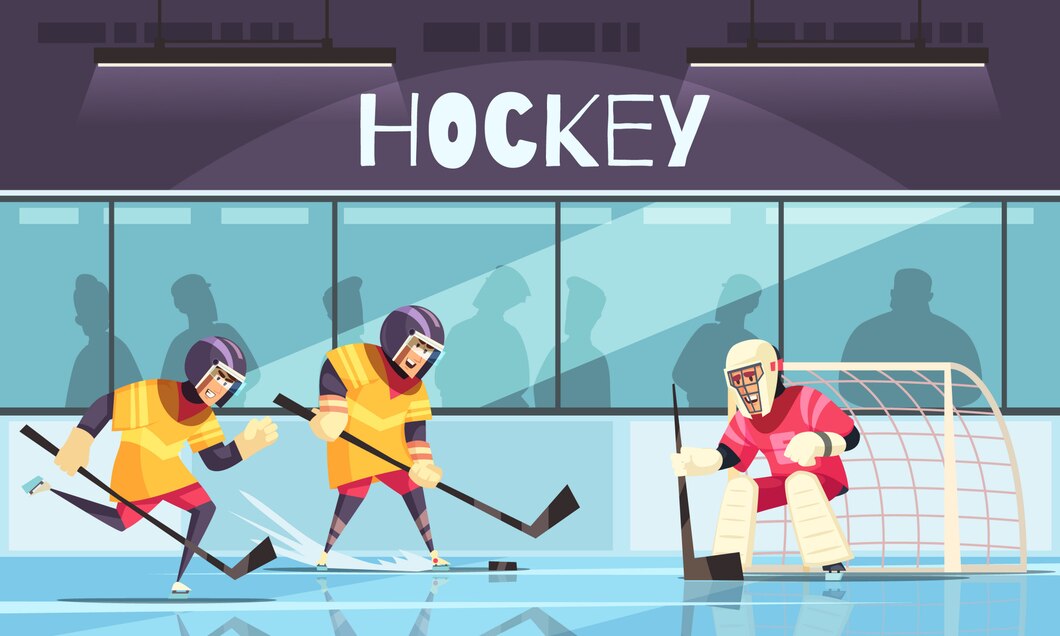Hockey, a fast-paced and exhilarating sport, has captivated fans around the world with its intense action, skilled maneuvers, and competitive spirit. One aspect that adds to the excitement is the duration of a hockey game. Unlike some sports with fixed game lengths, hockey’s dynamic nature brings about variations in how long a game can last. In this exploration, we’ll delve into the factors influencing the duration of a hockey game and shed light on the different levels of play.
Table of Contents
Understanding the Basics:
Before we dive into the details, it’s crucial to understand the fundamental structure of a hockey game. Typically, a standard hockey game is divided into three periods, each lasting 20 minutes. However, this is a general rule, and variations exist based on the level of play, including professional leagues, college hockey, and youth competitions.
Regulation Play:
At the professional level, such as the National Hockey League (NHL), the regulation time for a game is 60 minutes, split into three periods of 20 minutes each. After the first and second periods, there is a 17-minute intermission for players to rest and for teams to strategize. The clock stops during stoppages in play, such as penalties, goals, and puck out-of-play situations, contributing to the overall time duration of the game.
Overtime:
In the event of a tie at the end of regulation, an overtime period is introduced to determine the winner. Overtime durations vary between leagues, but common formats include 5-on-5 play for a set duration (usually five minutes) or sudden-death overtime, where the first team to score wins. If no winner is determined during overtime, a shootout may occur, adding an extra layer of excitement.
Shootouts:
Shootouts are a thrilling conclusion to tied games in hockey. If the score remains tied after the initial three rounds, the shootout extends to a sudden-death format. The game concludes when one team scores, securing the victory.
Factors Influencing Game Duration:
Several factors contribute to the overall duration of a hockey game, making each match a unique and dynamic experience.
Stoppage Time:
Hockey is known for its frequent stoppages in play. Whether due to penalties, goals, or the puck leaving the playing surface, these interruptions add to the overall time spent on the game. Referees are responsible for enforcing the rules, and their decisions impact the flow of play and the duration of the game.
Penalties:
Penalties are a crucial aspect of hockey, and their occurrence can influence the game’s length. When a player commits an infraction, they are sent to the penalty box for a designated time, during which their team plays shorthanded. Penalties range in severity, with some resulting in a two-minute power play for the opposing team, while others lead to longer penalties or ejections.
Video Reviews:
The introduction of video review technology in hockey has added another dimension to the game’s duration. Coaches can challenge certain calls on the ice, leading to a review by officials to ensure the correct decision is made. While video reviews contribute to fair play, they also extend the time spent on the game.
TV Timeouts:
Television broadcasts play a significant role in hockey, with scheduled TV timeouts occurring at various points during each period. These breaks provide an opportunity for broadcasters to air commercials, contributing to the financial aspect of the sport. While TV timeouts are a necessary part of the game, they can affect the flow and duration of play.
Intermissions:
Intermissions between periods serve as a time for players to rest, regroup, and strategize for the upcoming period. These breaks contribute to the overall duration of the game and allow fans to engage in discussions or enjoy the entertainment provided during intermissions.
Levels of Play and Varied Durations:
The duration of a hockey game varies across different levels of play, catering to the age, skill level, and specific rules of each league.
Youth and Amateur Leagues:
In youth and amateur hockey leagues, the duration of games is often shorter to accommodate the age and skill level of the players. Games may consist of two shorter periods, typically ranging from 12 to 15 minutes each. The emphasis is on skill development, teamwork, and ensuring a positive experience for young players.
College Hockey:
College hockey follows a structure similar to professional leagues, with three periods lasting 20 minutes each. Overtime and shootouts are employed if necessary to determine a winner. The rules align closely with those of professional hockey, providing a bridge between amateur and elite levels of play.
International Play:
International competitions, such as the Winter Olympics and the IIHF World Championship, adhere to their own set of rules and regulations. While many aspects mirror professional hockey, including three 20-minute periods, variations may exist, such as the use of larger ice surfaces and different overtime formats.
Conclusion:
In conclusion, the duration of a hockey game is a multifaceted aspect influenced by various factors, including regulation play, stoppages, penalties, video reviews, and intermissions. From the fast-paced action of the professional leagues to the developmental focus of youth hockey, each level of play contributes to the rich tapestry of the sport.
As fans eagerly anticipate the outcome of each game, they can appreciate the strategic elements, skilled performances, and the unpredictable nature that makes hockey a truly captivating experience. Whether a casual viewer or a die-hard enthusiast, understanding the nuances of how long a hockey game lasts adds depth to the appreciation of this dynamic and thrilling sport.
